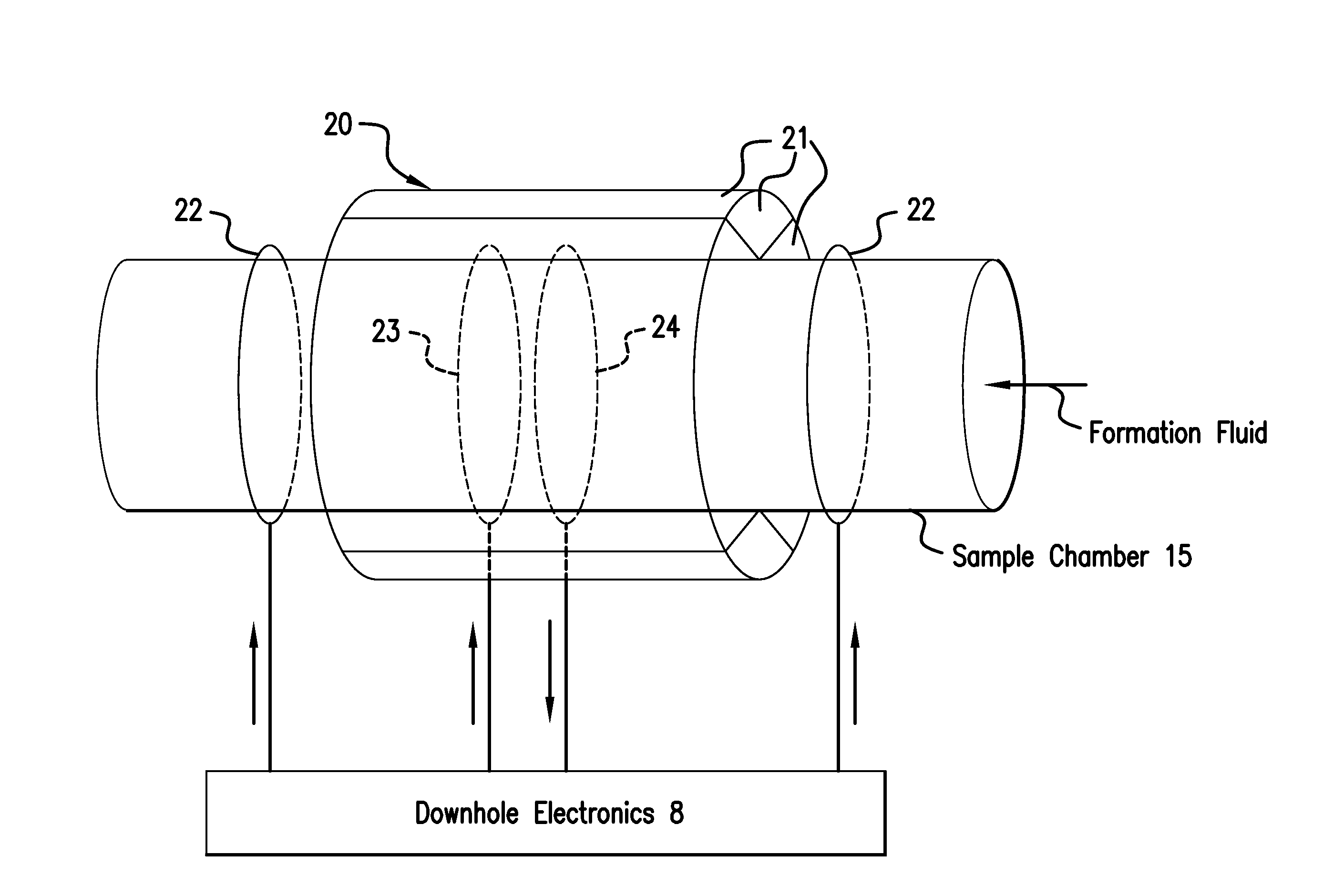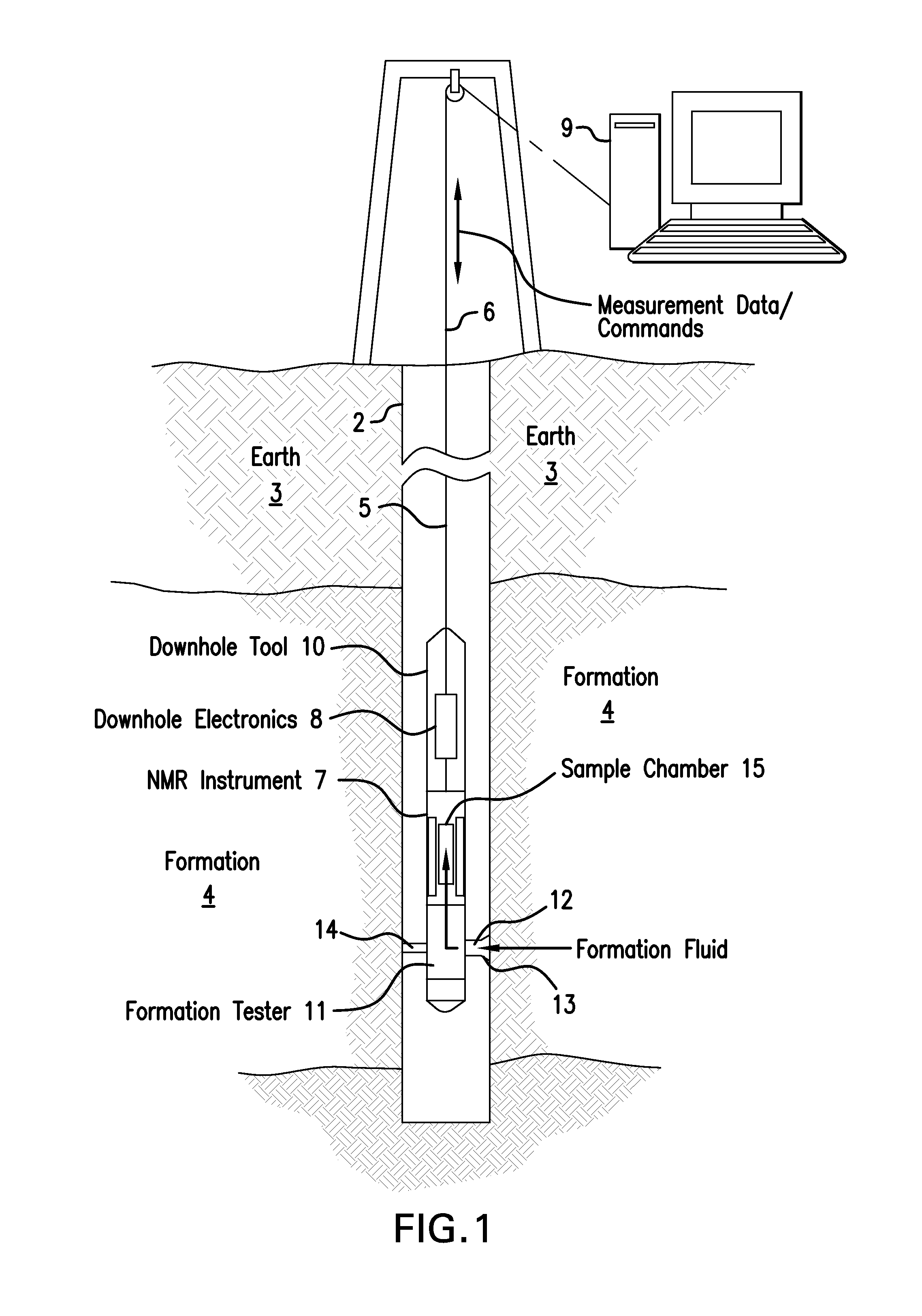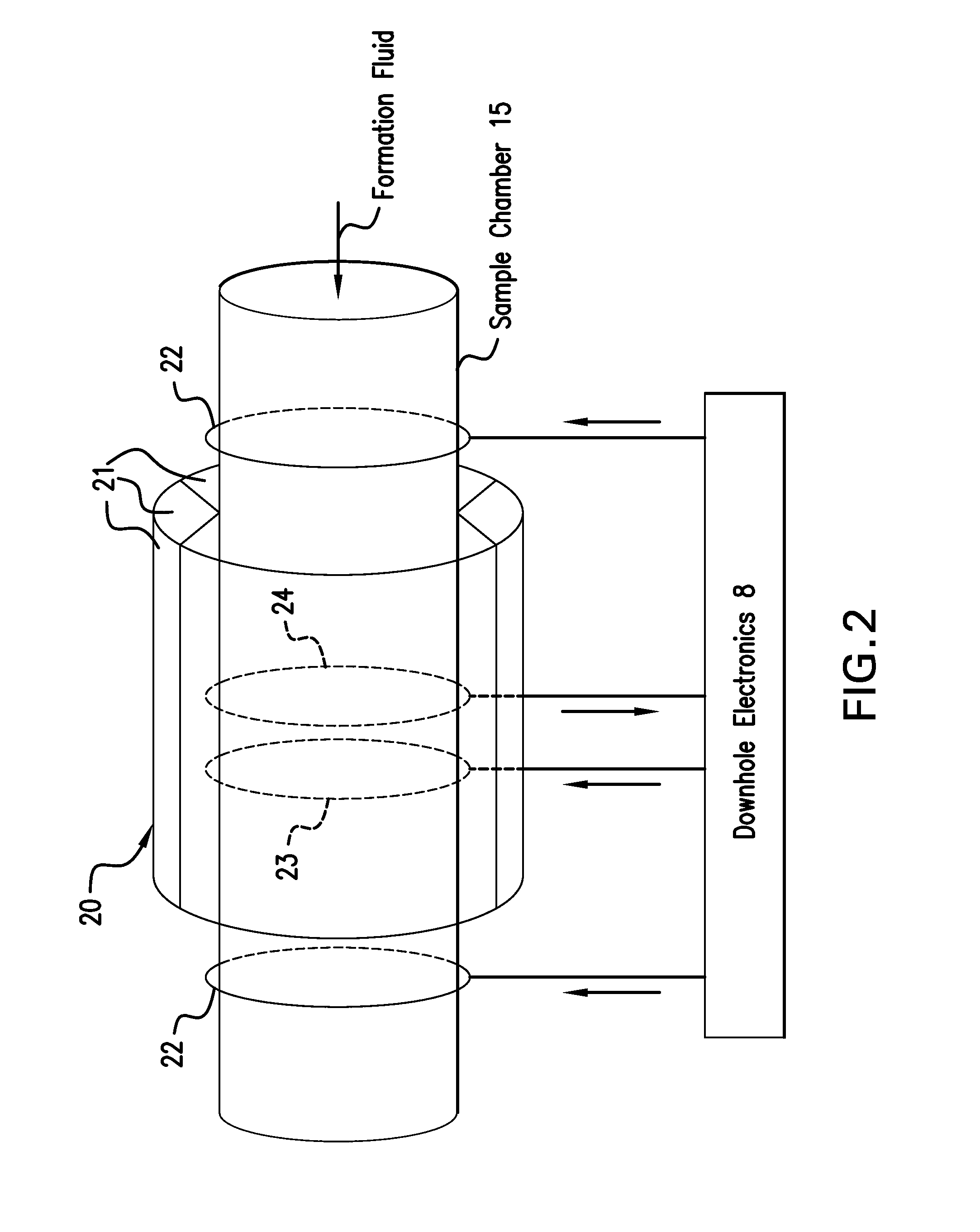Estimating molecular size distributions in formation fluid samples using a downhole nmr fluid analyzer
a technology of molecular size distribution and fluid analyzer, which is applied in the direction of material analysis, using reradiation, instruments, etc., can solve the problems of data that may present a false indication, data that may be difficult to analyze, and high cost of hydrocarbon exploration
- Summary
- Abstract
- Description
- Claims
- Application Information
AI Technical Summary
Benefits of technology
Problems solved by technology
Method used
Image
Examples
Embodiment Construction
[0015]A detailed description of one or more embodiments of the disclosed apparatus and method presented herein by way of exemplification and not limitation with reference to the Figures.
[0016]Disclosed are method and apparatus for estimating a molecular chemical composition and a molecular size of hydrocarbons in an earth formation using a downhole nuclear magnetic resonance (NMR) instrument. A set of NMR measurements are performed downhole on a sample of the hydrocarbons and from the measurement set the molecular chemical composition and size are determined. Because different hydrocarbon types may have a similar chemical composition, the molecular size determination is used to differentiate between the different types of hydrocarbons.
[0017]FIG. 1 illustrates a cross-sectional view of an exemplary embodiment of a downhole tool 10 disposed in a borehole 2 penetrating the earth 3, which includes an earth formation 4. The term “subsurface material” may be used to refer to any material ...
PUM
 Login to View More
Login to View More Abstract
Description
Claims
Application Information
 Login to View More
Login to View More - R&D
- Intellectual Property
- Life Sciences
- Materials
- Tech Scout
- Unparalleled Data Quality
- Higher Quality Content
- 60% Fewer Hallucinations
Browse by: Latest US Patents, China's latest patents, Technical Efficacy Thesaurus, Application Domain, Technology Topic, Popular Technical Reports.
© 2025 PatSnap. All rights reserved.Legal|Privacy policy|Modern Slavery Act Transparency Statement|Sitemap|About US| Contact US: help@patsnap.com



